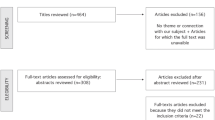Abstract
Sharing folktales with young children offers an array of opportunities. These stories have universal appeal, abate fears, support divergent thinking, and connect generations. Eleven newest renditions of classic tales are reviewed and recommended.
Similar content being viewed by others
References
Bettelheim, B. (1976). The uses of enchantment: The meaning and importance of fairy tales. New York: Knopf
Carney, S. (2004). Folktales: What are they? Retrieved October 1, 2004 from http://falcon.jmu.edu/~ramseyil/tradcarney.htm
Cornell, C. E. (1993). Language and culture monsters that lurk in our traditional rhymes and folktales. Young Children, 48(6), 40-46
Howarth, M. (1989). Rediscovering the power of fairy tales: They help children understand their lives. Young Children, 45(1), 58–65
Lynch-Brown, C. & Tomlinson, C. (2004). Essentials of children’s literature. Boston: Allyn and Bacon
Sawyer, W. E. (2004). Growing up with literature. Clifton Park, NY: Thomson Delmar Learning
Author information
Authors and Affiliations
Corresponding author
Rights and permissions
About this article
Cite this article
Rupiper, M., Zeece, P.D. Fee, Fi, Fo, Fum: Folktales are for Everyone!. Early Childhood Educ J 32, 377–382 (2005). https://doi.org/10.1007/s10643-005-0006-6
Published:
Issue Date:
DOI: https://doi.org/10.1007/s10643-005-0006-6




